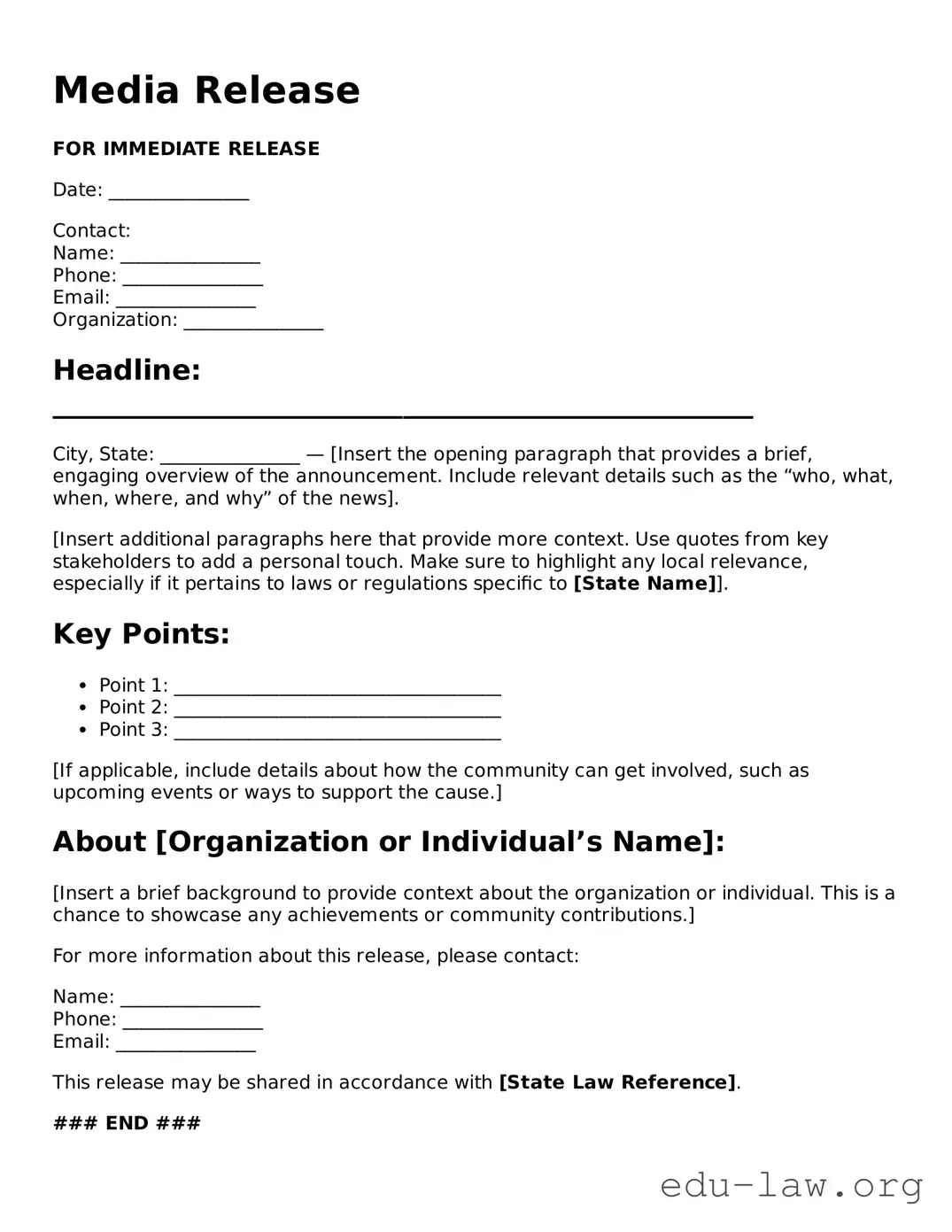What is a Media Release form?
A Media Release form is a legal document that grants permission to organizations or individuals to use a person's image, likeness, or personal story in various media formats. This could include photographs, videos, interviews, or written content. By signing this form, individuals allow their appearance and personal information to be used for promotional, educational, or informational purposes.
Why is a Media Release form important?
This form is crucial because it protects both parties involved. For the organization, it secures the right to use the content without the risk of legal disputes arising from unauthorized use. For the individual, it ensures that they have clarity on how their likeness and personal information will be utilized, promoting transparency and informed consent.
Who needs to sign a Media Release form?
Anyone whose image, voice, or story may be captured and used in media should sign a Media Release form. This includes participants in photographs, video productions, interviews, or any content that is intended to be published or distributed. If minors are involved, a parent or guardian must provide consent on behalf of the child.
Can I revoke my consent after signing a Media Release form?
Generally, once a Media Release form is signed, it is considered a binding agreement. However, there may be circumstances under which you can revoke your consent. It is advisable to discuss your concerns with the organization that issued the form. Open communication can often lead to a mutual understanding and a resolution that respects your wishes.
Are there any limitations to what can be included in a Media Release form?
Yes, a Media Release form should specify the types of media and purposes for which the individual's image or story will be used. It can also impose restrictions, such as limiting usage to a specific time frame or a particular campaign. Clear language in the release helps ensure both parties are aligned regarding the use of the content.
Is compensation required for signing a Media Release form?
Compensation is not always required when signing a Media Release. It often depends on the context of the usage. In some instances, individuals may receive payment or other forms of compensation for their participation. In other cases, particularly in non-profit or community-focused settings, individuals may choose to waive compensation in exchange for the opportunity to be featured.
What happens if I do not sign a Media Release form?
If you choose not to sign a Media Release form, the organization or individual is typically required to refrain from using your image or personal story. Your decision to not consent should be respected, and the project can proceed without your involvement. It's important to articulate your decision if you feel uncomfortable.
How long does a Media Release form remain in effect?
The duration of a Media Release form can vary. It may remain in effect indefinitely or could be limited to a specific duration as outlined in the form itself. Review the document to understand the terms, and don’t hesitate to seek clarification if needed.
Do I need a lawyer to review my Media Release form?
While it is not mandatory to have a lawyer review a Media Release form, seeking legal advice can provide you with peace of mind. A legal professional can help clarify the terms, explain your rights, and ensure that your interests are adequately protected. This extra step can be especially important if you have concerns about how your likeness or story will be used.
